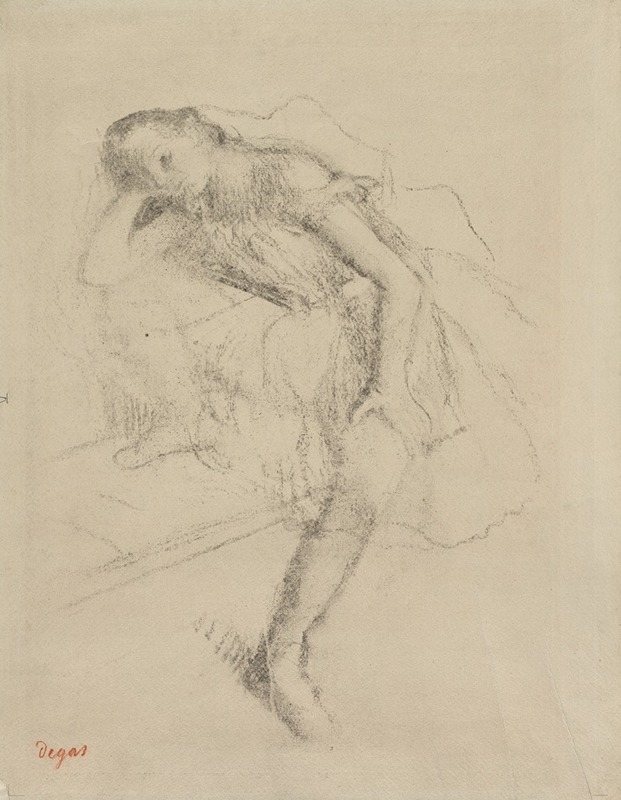
Dancer at Rest
A hand-painted replica of Edgar Degas’s masterpiece Dancer at Rest, meticulously crafted by professional artists to capture the true essence of the original. Each piece is created with museum-quality canvas and rare mineral pigments, carefully painted by experienced artists with delicate brushstrokes and rich, layered colors to perfectly recreate the texture of the original artwork. Unlike machine-printed reproductions, this hand-painted version brings the painting to life, infused with the artist’s emotions and skill in every stroke. Whether for personal collection or home decoration, it instantly elevates the artistic atmosphere of any space.
"Dancer at Rest" is a notable work by the French artist Edgar Degas, who is renowned for his depictions of dancers and the ballet. Degas, a prominent figure in the Impressionist movement, often focused on capturing the human form in motion, and his works frequently explore the themes of movement, grace, and the everyday life of performers.
Edgar Degas was born on July 19, 1834, in Paris, France, and he became one of the leading artists of the Impressionist movement, although he preferred to be called a realist. His fascination with ballet dancers began in the 1870s, and he produced a significant number of paintings, pastels, drawings, and sculptures on this subject. Degas's works are characterized by their innovative compositions, unusual viewpoints, and a keen interest in capturing the nuances of human posture and movement.
"Dancer at Rest" is one of Degas's many works that depict dancers in moments of repose, away from the spotlight of performance. This painting, like many of his works, reflects his interest in the behind-the-scenes aspects of the ballet world. Degas was known for his ability to capture the candid, unguarded moments of dancers, providing a glimpse into their lives beyond the stage.
The painting showcases Degas's mastery of form and his ability to convey the physicality and exhaustion of dancers. His use of color and light often highlights the delicate textures of the dancers' costumes and the subtle play of muscles beneath their skin. Degas's technique involved layering pastels to create depth and vibrancy, which is evident in the rich, tactile quality of his works.
Degas's approach to composition often involved cropping figures in unexpected ways, influenced by the burgeoning field of photography and Japanese prints. This technique is evident in "Dancer at Rest," where the framing of the subject might suggest a snapshot of a fleeting moment. His focus on the natural, unposed aspects of his subjects was revolutionary at the time and contributed to the evolving narrative of modern art.
The artist's choice to depict dancers at rest rather than in performance was significant. It allowed him to explore the dichotomy between the public and private personas of performers, emphasizing the discipline and labor that underpin the art of ballet. Degas's works often reveal the tension between the elegance of the performance and the physical demands placed on the dancers.
"Dancer at Rest" is part of a broader body of work that has been celebrated for its insight into the world of dance and its contribution to the Impressionist movement. Degas's ability to capture the essence of his subjects with empathy and precision has left a lasting impact on the art world. His works continue to be studied and admired for their technical brilliance and their profound understanding of the human condition.
While "Dancer at Rest" is just one example of Degas's extensive exploration of the theme of dance, it encapsulates the artist's enduring fascination with movement, form, and the quiet moments that define the lives of performers.

















![Design for fine art print, ‘The Mad Dancer’.] [Original study for woodcut print](/imgs/249285/s/winold-reiss-design-for-fine-art-print-the-mad-dancer-original-study-for-woodcut-print-636dd80b.jpg)